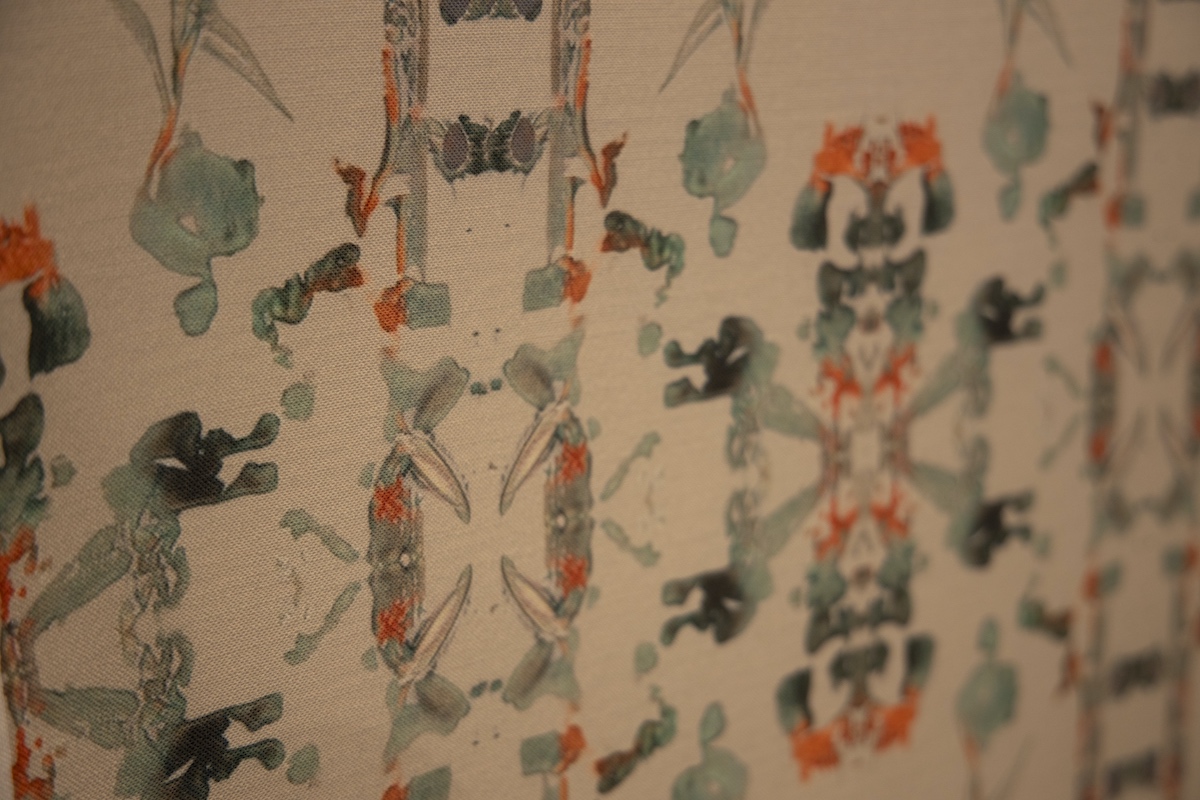While there is perhaps a province in which the photograph can tell us nothing more than what we see with our own eyes, there is another in which it proves to us how little our eyes permit us to see.
—Dorothea Lange[1]
Seeing through Art Across Time and Machine
This week our office had the great privilege of attending Da Vinci Art Alliance’s, 2020 Da Vinci Fest. Our very own Lisa Marie Patzer, communications director of the SNF Paideia Program, had her artwork featured in “Philadelphia Forthcoming: The Endless Urban Portrait,” one of the gallery exhibitions in the festival. As we walked through the gallery, she explained to us her process and what she was exploring in her work. In some of her pieces, she used 8mm films from home movies shot in the 1960s to create collaged still images. She overlayed these images with other images. Sometimes, she wanted to focus attention on different aspects of the photo. One photo showed the edges to reveal that it was part of a film reel.
Another aspect of Patzer’s work examines machine learning technologies. Beyond seeing machine learning along a good-bad binary, her work uses machine learning as a tool to reanimate archival resources. One of her projects applies machine learning to still photographs, asking the machine to “learn” the photo and reproduce it differently. This helps us to see the photo anew.
A fascinating further use of machine learning involved loading hundreds of wallpaper samples from Sears and Roebuck catalogues dated 1916 – 1965 into a computer program and asking an algorithm to “learn” them and then generate its own styles in keeping with its learning. In collaboration with the College of Architecture and Built Environment at Jefferson University, Patzer then printed the new designs onto large bolts of wallpaper fabric and hung them floor to ceiling. They were stunning.
Learning to “See” from Others
As I try to write all that Patzer conveyed to us in her words about her art and in the pieces themselves, I am quite aware that my words are not doing the experience justice. My words are simplifying the complexities that we were exposed to and making a multi-dimensional experience two dimensional.
What I realized from the richness of our time at Da Vinci Fest, touring the Gallery installations, was what Lange explains here. My perception was deeply limited. Until Lisa Marie shared with me her process and the questions she was exploring in her work, I could only see so much. Only after hearing from her did I realize my blindness; my imperception.
Having my eyes opened, made me question, if only for a moment, how I see. It made me curious, made me want to see better. William Blake explains this experience when he says, “If the doors of perception were cleansed, everything would appear to man as it is — infinite.”
Blake points to another piece of the experience of walking through an exhibition created by someone in your office community. As Lisa Marie Patzer showed us what and how she was thinking, we all got to know her better. We were able to better perceive and appreciate parts of her thinking and feeling that we do not always get to see in the 9-5 work environment. We grew closer as a community because we were able to see her creative imagination at work. I was filled with gratitude and connection.
The experience also made me question how I see others. How often do our eyes keep us from really seeing aspects of the people around us; how often are we blinded to Blake’s “infinite” all around us?
[1]https://www.psychologytoday.com/us/blog/here-there-and-everywhere/201210/50-quotes-perspective



